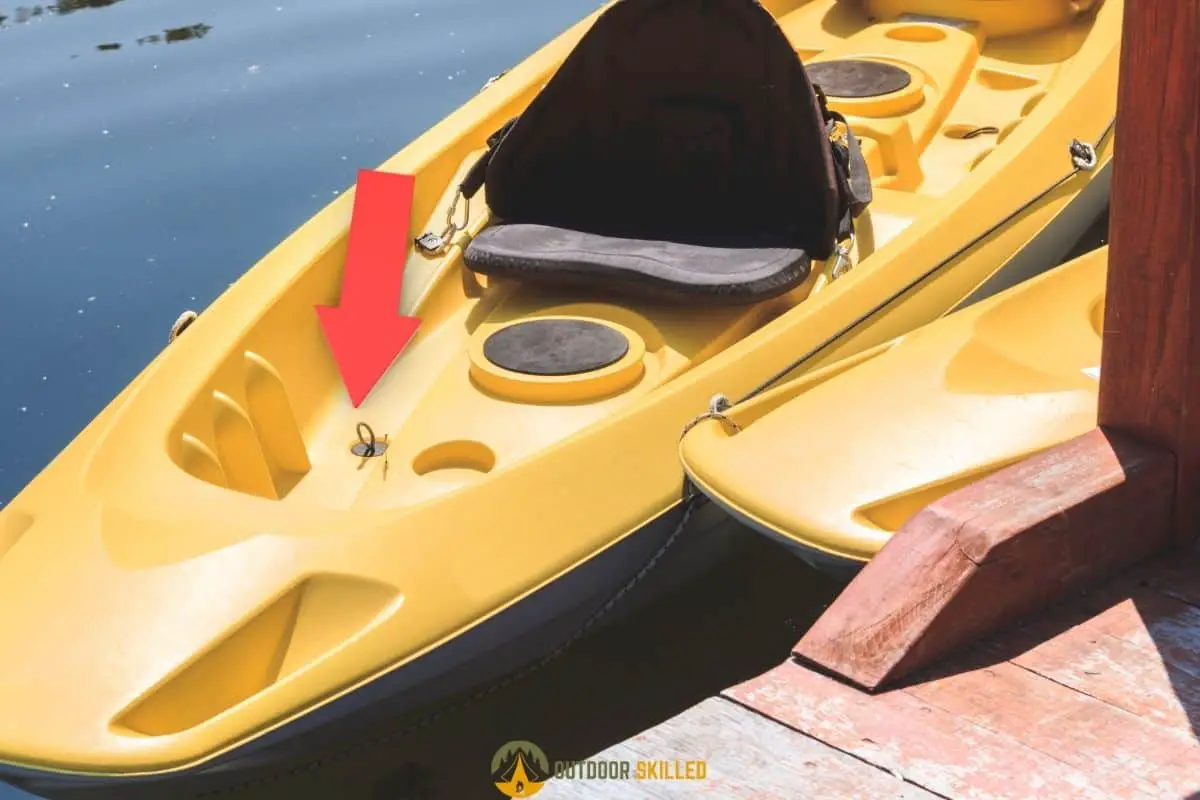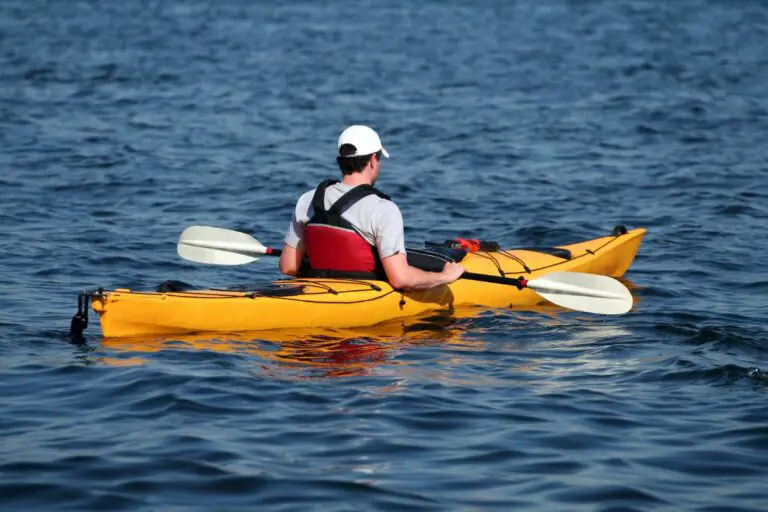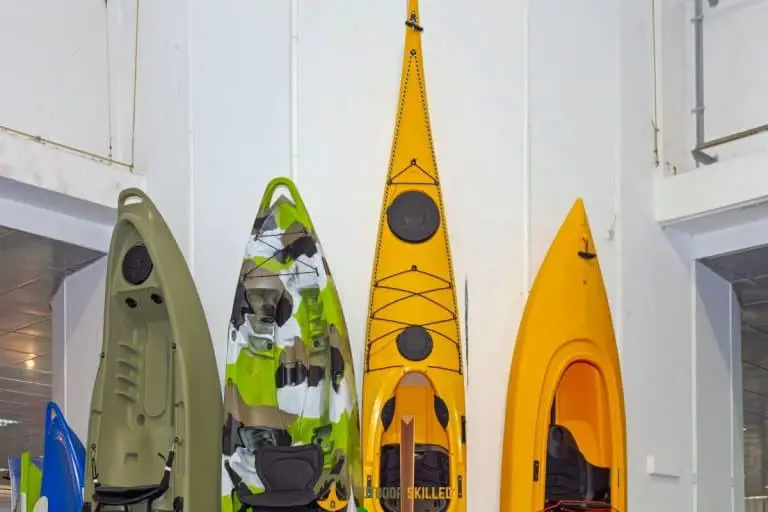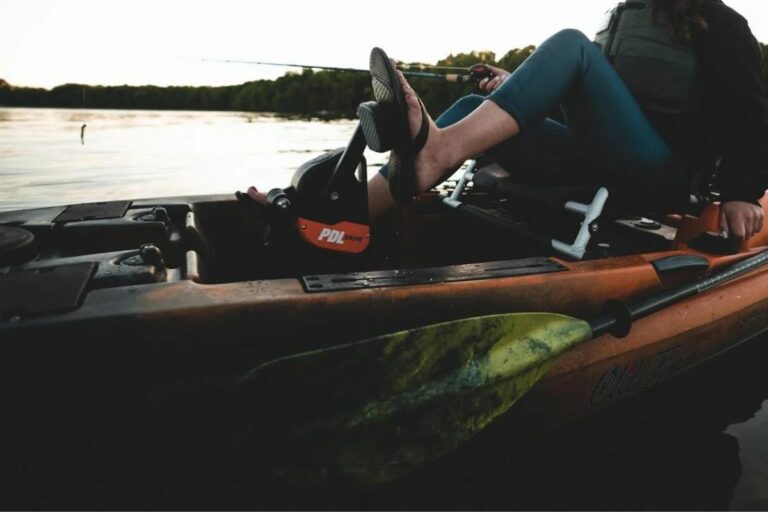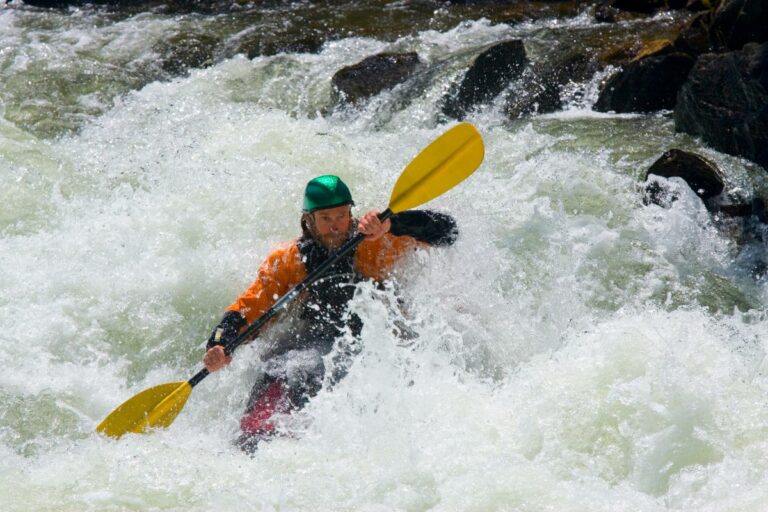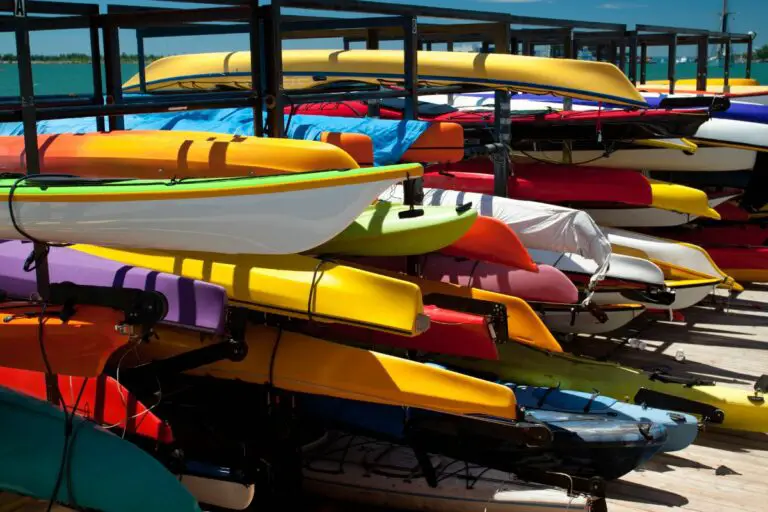Why Do Sit-on-Top Kayaks Have Holes? What Even Are Scupper Plugs?
Many beginners kayaking for the first time are confused by the holes in their sit-on-top kayaks and they can even be worried that the kayak may sink because of these holes. However, there’s no need to worry, these holes are deliberately installed there for a good reason.
So, why do sit-on-top kayaks have holes? Sit-on-Top Kayaks have holes called scupper holes which drain the excess water that splashes inside instead of having it pool on the floor of the kayak, which helps in keeping the paddlers safe and comfortable. Some kayakers, however, choose to plug the holes using scupper plugs.
Continue reading to learn more about the pros and cons of using scupper plugs, how to use them, and how to easily make your own plugs at home. Or, if you’re ready to check out some kayaks, find out the best budget-friendly kayaks here.
Table of Contents
What are Scupper plugs?

Before we get into the pros and cons of using scupper plugs, you need to understand what scupper plugs are and what exactly is their purpose.
Scupper plugs are designed to fit into the scupper holes of sit-on-top kayaks.
Sit-on-top kayaks are normally manufactured with four holes in the bottom known as scupper holes. So, the main purpose of scupper plugs is to block or cover these holes to prevent water from coming in and keep the kayak dry.
Scupper plugs are made from rubber or plastic and they come in different designs depending on the type of sit-on-top kayak they’re made for. They also contain a short piece of string to easily remove the plugs when you don’t need them.
The most effective scupper plugs provide a water-tight fit and are easy to install and remove.
What Are the Pros and Cons of Scupper Plugs?
Now let’s take a look at the pros and cons of using scupper plugs.
Pros
The key benefit of using scupper plugs is to maintain the kayak’s buoyancy which can be affected if you’re carrying heavy gear.
The extra weight of the gear applied on the water’s surface will push the kayak further down in the water causing more water to make its way in.
Therefore, blocking the holes helps in maintaining the kayak’s weight on the lower side by preventing the water from entering.
Scupper plugs are also good when you want to keep cold water out of the kayak if you’re kayaking in winter, as it can be uncomfortable to have splashes of cold water coming into your kayak. Also, if you’re not wearing waterproof and warm clothes, getting exposed to cold water can lead to getting sick with hypothermia.
Con
The main drawback of using scupper plugs is losing the self-draining benefit of sit-on-top kayaks. If water builds up in the floor of the kayak, it can lead to a loss in buoyancy and maneuverability which can threaten your safety.
It’s not a good idea to use scupper plugs in bad conditions because more water will be pushed into the kayak consistently. This can lead to having a puddle forming on the floor of the kayak within a few minutes.
So, leaving the holes unblocked will help drain water fast and drying the deck, therefore keeping you and your gear safe.
Another situation where it’s not ideal to use scrapper plugs is in case your kayak flips.
Something could go wrong that leads to having your kayak flipped by 180 degrees, even if you’re following all safety measures.
In this situation, a vacuum is developed between the sitting area and ocean water because of the scupper holes being plugged. This can cause a problem with re-flipping the kayak.
How to Use Scupper Plugs?
The way to use scupper plugs is very simple. All you need to do is push the rubber or plastic plugs in the scupper holes. There are also some models of scupper plugs that need to be screwed in the holes.
The short strings that the plugs are manufactured with allow you to easily pull them out if you need to drain water out of the kayak.
Generally, scupper plugs can be installed when you’re sitting in the kayak’s cockpit. They can also be installed when the kayak is still on land.
How to Store a Kayak with Scupper Plugs?
Temperature changes can greatly affect the kind of plastic used in making most sit-on-top kayaks. In extremely warm temperatures, sit-on-top kayaks tend to expand as hot air builds up inside them.
So, if you don’t remove the scupper plugs from the holes while your kayak is in storage, the plugs can get permanently stuck inside. In some cases, this can also lead to damaging your kayak’s hull.
Therefore, it’s very important to remove scupper plugs after each use and before storing your kayak.
How to Make Your Own DIY Scupper Plugs?
Some people go for relatively cost-effective DIY solutions for scupper plugs.
The main purpose of any DIY scupper plug is to tightly seal the scupper holes of your kayak so that you won’t have to sit in a water puddle while you’re paddling.
One of the most popular methods for DIY scupper plugs is by using foam practice golf balls. The main challenge with this method is making the plugs easy to remove.
Another method is using rubber stoppers. They are normally sold in various sizes, so it’s really important to measure the diameter of your kayak’s scupper holes and choose stoppers of the same size.
Here are the steps you can follow to make your DIY scupper plugs:
- Drill a hole through the center of the golf ball or the rubber stopper.
- Install a short length of paracord to make the plugs easy to remove.
- Install a small metal washer at the bottom of the golf ball or under the narrow end of the stopper.
- Tie a knot at both ends of the paracord. The knot will prevent the paracord from falling out and the metal washer will prevent the knot from sliding back through the hole when you try to remove the plugs.
What Are Alternative Ways of Keeping Water out of Kayaks?

Although scupper holes are normally effective at keeping the water levels balanced, sometimes they may not be enough
Here are some other alternatives that can help you keep water out of your kayak:
Bilge Pump
This is a tool that is designed to manually pump water out of the kayak’s interior at a quick rate, which can be useful in the event of a capsize.
They’re built to be easily stored since most kayaks don’t have big storage space.
There’s also the option of using an electric bilge pump if you don’t want to manually pump out the water. But keep in mind that electric bilge pumps are considerably more expensive.
Sponge
This kind of sponge is not the same as a typical dish sponge. It’s designed to maximize water absorbance by clearing out high amounts of water in the shortest time possible.
The Best Scupper Plug Kit
If you don’t want to build your own scupper plugs, you can find some pretty easy scupper plugs that are relatively cheap everywhere, here is a very good scupper plugs kit from Amazon that I’ve found pretty useful; The Universal Kayak Scupper Plug Kit:

You can check it on Amazon here.
Related Questions
How to Test Your Scupper Plugs for Leaks?
The best way to test your scupper plugs for leaks is by filling your kayak with water while it’s still on land and looking around the outside and underneath for any signs of leaking.
Do You Need to Plug the Scupper Holes in Your Kayak?
If you plug the scupper holes it would mean less water inside the kayak. While leaving them unplugged could lead to having puddles of water forming on the floor of the kayak. There’s no kayak rule that requires a paddler to use scupper plugs, using them mainly depends on your preference when you’re kayaking
Will Scupper Holes Sink a Kayak?
No, scupper holes will not sink your kayak. These holes are ultimately installed as a safety measure to maintain the water levels in kayaks. However, it’s still important to look out for the water levels in your kayak and take note of any abnormalities.
Helpful Resources
A Guide to Scupper plugs – YouTube
If you like this article, please share it or pin it, you can find the share buttons below. We will really appreciate it ❤️

